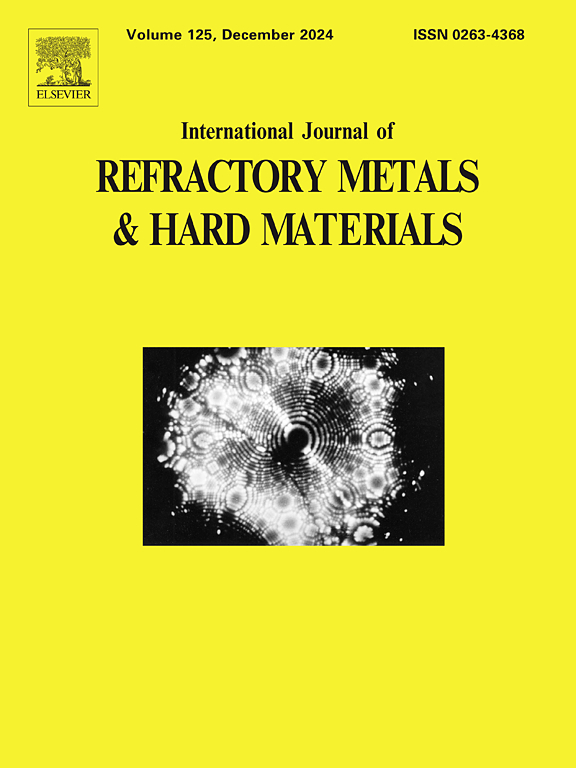Interfacial structure and performance analysis of PcBN composites with metal/ceramic binder
IF 4.2
2区 材料科学
Q2 MATERIALS SCIENCE, MULTIDISCIPLINARY
International Journal of Refractory Metals & Hard Materials
Pub Date : 2024-11-14
DOI:10.1016/j.ijrmhm.2024.106961
引用次数: 0
Abstract
To investigate the effect of binder type on the interface and properties of PcBN composite, a series of PcBN composites with Al, TiN, Co, Ni, and W as binders were prepared under the conditions of 5.5–6 GPa, 1450–1550 °C, and 50 min, the interfacial bonding mechanism and material properties of PcBN composite were analyzed and discussed using SEM/EDS, XRD, and mechanical testing equipment. The results show that new phases are generated in the sintering of PcBN composites with different types of binders, which are uniformly distributed at the grain boundaries or in the interstices of grains to form a dense organization; cBN-cBN and cBN-TiN grain boundaries are formed in metal and ceramic binder PcBN, respectively, and the microhardness reaches 41.66 GPa at the highest level. In addition, the metal binder mainly diffuses by capillary force, while the ceramic binder mainly infiltrates with each other. This shows that the mutual infiltration of the phases within the PcBN material layer and the cemented carbide layer is the key factor in improving the interfacial bond strength.
含有金属/陶瓷粘结剂的 PcBN 复合材料的界面结构和性能分析
为了研究粘结剂类型对 PcBN 复合材料界面和性能的影响,在 5.5-6 GPa、1450-1550 ℃、50 min 的条件下,制备了一系列以 Al、TiN、Co、Ni 和 W 为粘结剂的 PcBN 复合材料,并利用 SEM/EDS、XRD 和力学测试设备对 PcBN 复合材料的界面结合机理和材料性能进行了分析和讨论。结果表明,不同类型粘结剂的 PcBN 复合材料在烧结过程中会产生新相,这些新相均匀分布在晶界或晶粒间隙中,形成致密组织;金属粘结剂 PcBN 和陶瓷粘结剂 PcBN 中分别形成了 cBN-cBN 和 cBN-TiN 晶界,显微硬度最高达到 41.66 GPa。此外,金属粘结剂主要通过毛细管力扩散,而陶瓷粘结剂主要相互渗透。这表明,PcBN 材料层和硬质合金层内各相的相互渗透是提高界面结合强度的关键因素。
本文章由计算机程序翻译,如有差异,请以英文原文为准。
求助全文
约1分钟内获得全文
求助全文
来源期刊
CiteScore
7.00
自引率
13.90%
发文量
236
审稿时长
35 days
期刊介绍:
The International Journal of Refractory Metals and Hard Materials (IJRMHM) publishes original research articles concerned with all aspects of refractory metals and hard materials. Refractory metals are defined as metals with melting points higher than 1800 °C. These are tungsten, molybdenum, chromium, tantalum, niobium, hafnium, and rhenium, as well as many compounds and alloys based thereupon. Hard materials that are included in the scope of this journal are defined as materials with hardness values higher than 1000 kg/mm2, primarily intended for applications as manufacturing tools or wear resistant components in mechanical systems. Thus they encompass carbides, nitrides and borides of metals, and related compounds. A special focus of this journal is put on the family of hardmetals, which is also known as cemented tungsten carbide, and cermets which are based on titanium carbide and carbonitrides with or without a metal binder. Ceramics and superhard materials including diamond and cubic boron nitride may also be accepted provided the subject material is presented as hard materials as defined above.

 求助内容:
求助内容: 应助结果提醒方式:
应助结果提醒方式:


